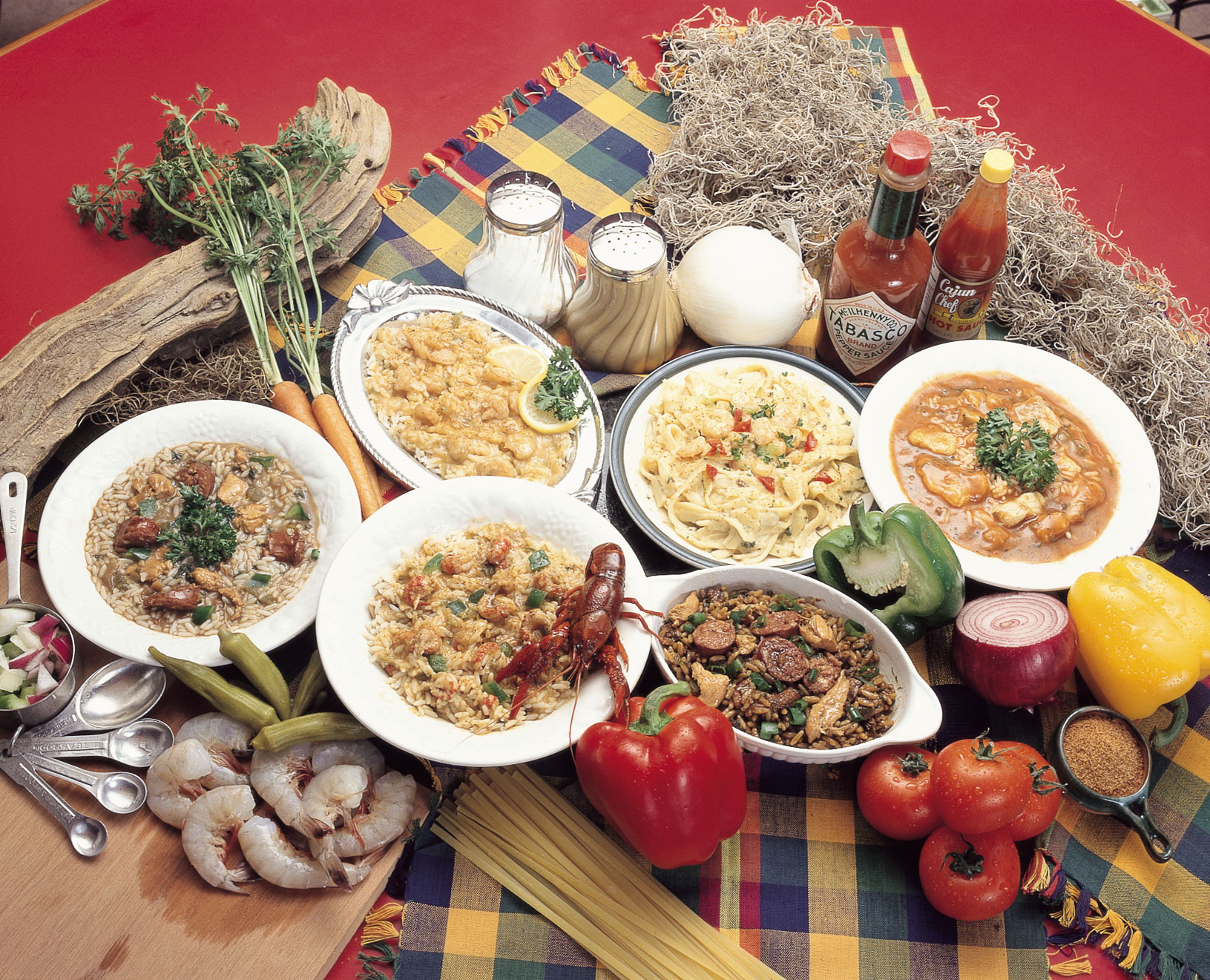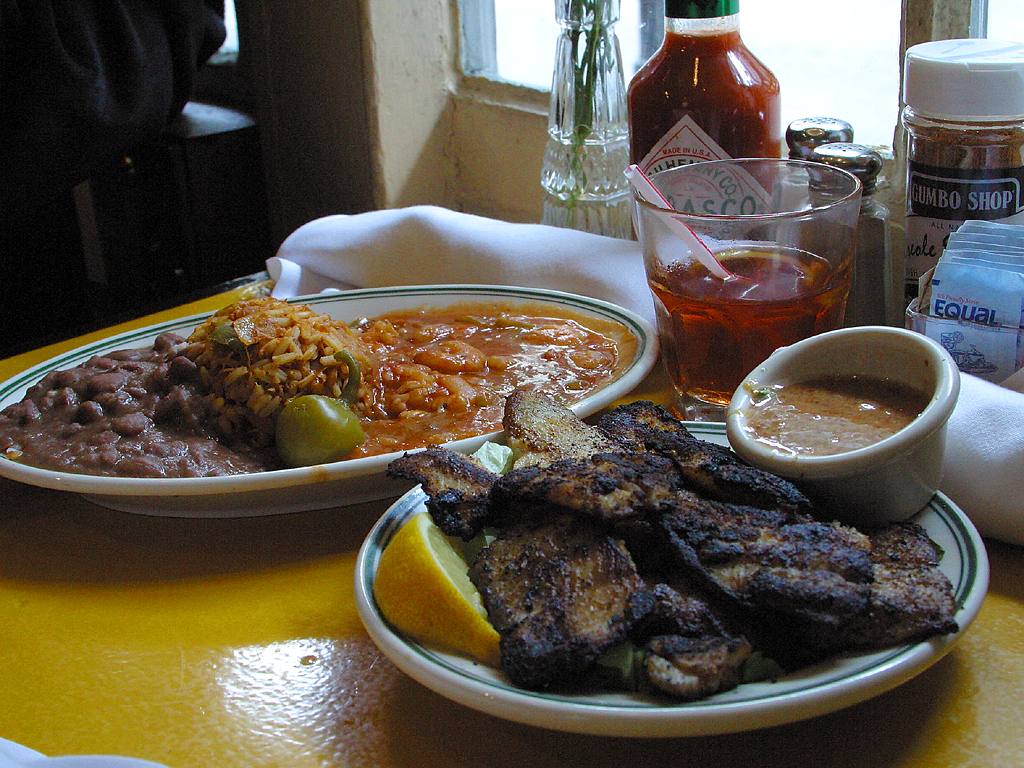In
her book “Creole”, Sybil Klein states the
following: “Louisiana Creole cuisine” extends
to all those countries that trace the pattern
of the American slave trade route from West Africa to the Caribbean down to
thee north eastern coast of South s America and finally back up to Louisiana.
Once in the New World, these slaves not only grew the produce but were responsible
for preparing and cooking dishes that fed slave owners and slaves for hundreds
of years.
The result of what these millions of cooks created from the cultural
memory of cookingin Africa combined with the acculturated tastes and ingredients
from indigenous peoples in the Caribbean, South America, and Louisiana was
Creole cuisine.
The West
African connection to Creole cuisine is apparent upon examination of the culinary
habits of West African people. Jessica B. Harris traces the early diet of
West Africans from the Middle Ages.
She summarizes her findings: It all started
in Africa.Although some foods brought to the New World by slaves were indigenous
to Africa - such as okra, kidney beans,, black-eyed peas, and watermelon -
others were introduced to the African diet by European traders.
From the mid-sixteenth to the end of
the eighteenth century, the eating habits of Africa were transformed.
The
coconut tree arrived from South Asia sometime between 1520 and 1540, while
sweet potatoes and maize came from America in the same century.
The seventeenth
century saw the arrival of cassava and pineapple, while the eighteenth brought
guavas and peanuts.
The Portuguese are responsible for the transplanting to
Africa of those small hot chiles, as well as corn, cassava, and whites potatoes.
Other chile peppers and tomatoes were also transplanted from the New World.
African
link to Creole cuisine is perhaps strongest with regard to food preparation
techniques and cooking methods. The most frequent practice, however, was the
use of mortar and pestle for pounding dry peppers,, seeds, nuts, fruits and
vegetables
This technique of making a paste to add to sauces is probably
the origin of the Creole roux, the base for all gravies or sauces. When asked
for many recipes, Creole cooks automatically answer: “First you make
a roux.”
One of the meanings of the French roux is “brown sauce.”
According to Jules Faine, the Haitian Creole roux means “rouge,”
or red.
Creole
cooks not only brown the flour but they also brown the onion, garlic, and
other vegetable seasonings to add to gravies.
Browning some vegetables in
this manner releases their sugar content, thus caramelizing the vegetables
and giving them a sweeter taste.
Since many of the cooks during the period
of slavery were mulatto women, all of those definitions come together; following
the African tradition, Creole cooks served with many of their main dishes
delicious sauces made with the roux technique.
The Real Origins of Creole Crusine |
|
Another
example of an African cooking method is barbecue. “African
often roasted meats and served them with a sauce; . .
. throughout the New World, barbecues are
very popular only in those countries which
have or have had a sizable number of black
people.
” Creole fried chicken is another
dish that follows the African technique: “
the cook prepared the poultry by dipping
it in a batter and deep fat frying it…
[Also] throughout West Africa, it was
a favorite practice to serve chicken, grilled
or fried, with a sauce, over rice.”
Another
West African method of food preparation used by Creole
cooks is deep-fat frying of meats, fritters,
and a variety of fish and shellfish dishes.
This African
technique is one of the reasons for the
particular flavor of the Creole fried cuisine.
Africans cooked “by steaming, baking,
stewing, roasting, or frying. . . . Meats
were roasted, stewed, or fried. Although fish
was sometimes smoked ort pickled, it
was usually fried or stewed.
|
One
characteristic of Creole dishes common to Africa, the Caribbean,
South America, and Louisiana
is the hot spicy
peppers found in sauces and often added to dishes after
cooking.
Whether it is the extremely hot “pilly-pilly”
of West Africa, the burning hot “Bonda Mam’ Jacques”
(“Mme Jacques’ behind”) used in Martinique
and Guadeloupe, the very hot chili jalapeño and habanero
peppers of the Caribbean and South America ,
or the hot, hot cyenne pepper of Louisiana, this tongue tingling
spiciness is the signature of Creole food.
|
Some Louisiana seafood gumbos are flavored
with a Choctaw Indian spice called file, which also functions as a thickening
agent. “In much of West Africa ‘gombo’ means okra.”
Okra
is used in gumbos for thickening the sauce. Creole cooks prepare a variety
of bean dishes. As in West Africa, the beans are boiled and a spicy sauce
is made from or combined with the beans.
Louisiana’s own Creole red beans
and rice is cooked that way with the addition of a salt meat or sausage for
seasoning. Add coconut milk and the dish is known as Arroz con Frijoles in
the Dominican Republic. Congris, a specialty of Cuba, is also a version of
red beans and rice. In Haiti they are called “Pois Rouge en Sauce”
or “Pois et Riz Colles.”
Jambalaya and Mirliton are other Louisiana
Creole dishes with Afro-Caribbean links.
Jambalaya is said by one author to
be an African dish, based on her identification of the word as a combination
of jamba (ham) and paella (rice), the main ingredients.Another fritter or
fried doughnut is the beignet.
Beignets are deep-fried African style, sprinkled
with powdered sugar, and served hot with café au lait.
The praline, a Creole candy made from
sugar, cream, and pecans, was supposedly invented by the cook of one Marshall
Dupleeses-Preslin (1598-1675) and remains a popular sweet in New Orleans.
It can also be found in other parts of the southern United States.
Creole
cookery has an amazing legacy from four continents. It is no wonder that Creole
is so popular around the world.
The excellent use of indigenous spices and
African cooking methods combined with talent for developing the new from the
old make Creole food a valuable resource with deep roots in the African diaspora
and an important element in defining Creole culture.”



